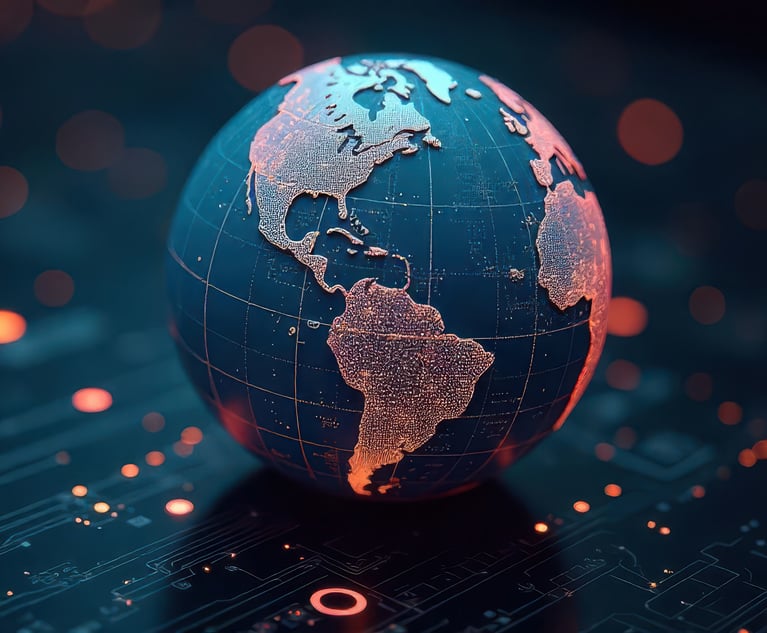DLA disruption continues as firm works with Microsoft to restore systems after hack
Recovery efforts continue as firm moves into fourth day of systems outage after cyber attack
June 30, 2017 at 08:16 AM
3 minute read

DLA Piper is beginning to restore connectivity following the cyberattack that prompted the firm to shut down its phone and computer systems.
The firm is working with engineers from Microsoft to help with the recovery of its systems, in what is now the fourth day of disruption at the global law firm.
Email coverage is returning "in batches" according to one partner, although there is an expectation that it will take a while for the backlog to clear.
Landline telephones are still down, with lawyers using mobile phones and messaging services such as WhatsApp to communicate.
One DLA partner said: "When you have mobile phones and WhatsApp, it's quite easy to get on with things. It's been quite nice having time without constant calls and emails."
Co-chief executive Simon Levine and senior partner Juan Picon are expected to update lawyers and staff next week on the firm's response to the attack. The firm has been working with law enforcement agencies including the FBI and the UK National Crime Agency.
A statement on the firm's website, which has been updated during the week, says: "Our experts are working to bring our systems back online as quickly and safely as possible and we are aiming for our email system to be up and running today.
"At this time, we have no evidence that the confidentiality of any client data has been compromised."
The Wall Street Journal has reported that the outage is disrupting active litigation, stating that DLA lawyers have sought deadline extensions in "at least five different civil cases in the US, including a patent dispute involving Apple".
The cyberattack that spread across the globe on Tuesday (27 June) appears to have originated in Ukraine, but also affected a number of global companies including Russian oil producer Rosneft and Danish shipping company Maersk.
Although it is not 100% clear who or what caused the attack, reports have pointed to an update to Ukrainian tax accounting software as the source of the virus.
Linklaters technology counsel Peter Church said: "There are reports that one source of the attack is an infected update from a software vendor."
"It is difficult to protect against this type of attack," he added. "Some updates will go through a formal change process that might detect and stop the virus, but not all software updates will."
This content has been archived. It is available through our partners, LexisNexis® and Bloomberg Law.
To view this content, please continue to their sites.
Not a Lexis Subscriber?
Subscribe Now
Not a Bloomberg Law Subscriber?
Subscribe Now
NOT FOR REPRINT
© 2025 ALM Global, LLC, All Rights Reserved. Request academic re-use from www.copyright.com. All other uses, submit a request to [email protected]. For more information visit Asset & Logo Licensing.
You Might Like
View All
Borden Ladner Gervais Cyber Expert Warns of Growing Threats From AI-Boosted Ransomware Attacks
3 minute read
Ex-Spies Reveal How Cybercriminals Exploit Law Firms’ Holiday Vulnerabilities
5 minute read
UN Treaty Enacting Cybercrime Standards Is Likely to Face Headwinds in US, Other Countries
Trending Stories
- 1Goodwin Procter Relocates to Renewable-Powered Office in San Francisco’s Financial District
- 2'Didn't Notice Patient Wasn't Breathing': $13.7M Verdict Against Anesthesiologists
- 3'Astronomical' Interest Rates: $1B Settlement to Resolve Allegations of 'Predatory' Lending Cancels $534M in Small-Business Debts
- 4Senator Plans to Reintroduce Bill to Split 9th Circuit
- 5Law Firms Converge to Defend HIPAA Regulation
Who Got The Work
J. Brugh Lower of Gibbons has entered an appearance for industrial equipment supplier Devco Corporation in a pending trademark infringement lawsuit. The suit, accusing the defendant of selling knock-off Graco products, was filed Dec. 18 in New Jersey District Court by Rivkin Radler on behalf of Graco Inc. and Graco Minnesota. The case, assigned to U.S. District Judge Zahid N. Quraishi, is 3:24-cv-11294, Graco Inc. et al v. Devco Corporation.
Who Got The Work
Rebecca Maller-Stein and Kent A. Yalowitz of Arnold & Porter Kaye Scholer have entered their appearances for Hanaco Venture Capital and its executives, Lior Prosor and David Frankel, in a pending securities lawsuit. The action, filed on Dec. 24 in New York Southern District Court by Zell, Aron & Co. on behalf of Goldeneye Advisors, accuses the defendants of negligently and fraudulently managing the plaintiff's $1 million investment. The case, assigned to U.S. District Judge Vernon S. Broderick, is 1:24-cv-09918, Goldeneye Advisors, LLC v. Hanaco Venture Capital, Ltd. et al.
Who Got The Work
Attorneys from A&O Shearman has stepped in as defense counsel for Toronto-Dominion Bank and other defendants in a pending securities class action. The suit, filed Dec. 11 in New York Southern District Court by Bleichmar Fonti & Auld, accuses the defendants of concealing the bank's 'pervasive' deficiencies in regards to its compliance with the Bank Secrecy Act and the quality of its anti-money laundering controls. The case, assigned to U.S. District Judge Arun Subramanian, is 1:24-cv-09445, Gonzalez v. The Toronto-Dominion Bank et al.
Who Got The Work
Crown Castle International, a Pennsylvania company providing shared communications infrastructure, has turned to Luke D. Wolf of Gordon Rees Scully Mansukhani to fend off a pending breach-of-contract lawsuit. The court action, filed Nov. 25 in Michigan Eastern District Court by Hooper Hathaway PC on behalf of The Town Residences LLC, accuses Crown Castle of failing to transfer approximately $30,000 in utility payments from T-Mobile in breach of a roof-top lease and assignment agreement. The case, assigned to U.S. District Judge Susan K. Declercq, is 2:24-cv-13131, The Town Residences LLC v. T-Mobile US, Inc. et al.
Who Got The Work
Wilfred P. Coronato and Daniel M. Schwartz of McCarter & English have stepped in as defense counsel to Electrolux Home Products Inc. in a pending product liability lawsuit. The court action, filed Nov. 26 in New York Eastern District Court by Poulos Lopiccolo PC and Nagel Rice LLP on behalf of David Stern, alleges that the defendant's refrigerators’ drawers and shelving repeatedly break and fall apart within months after purchase. The case, assigned to U.S. District Judge Joan M. Azrack, is 2:24-cv-08204, Stern v. Electrolux Home Products, Inc.
Featured Firms
Law Offices of Gary Martin Hays & Associates, P.C.
(470) 294-1674
Law Offices of Mark E. Salomone
(857) 444-6468
Smith & Hassler
(713) 739-1250









